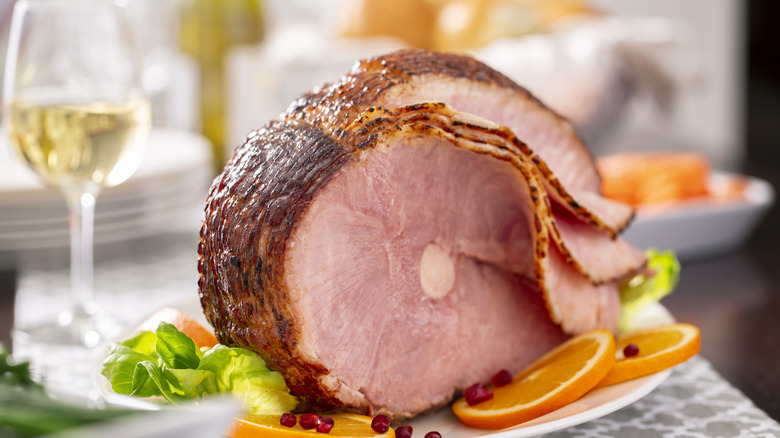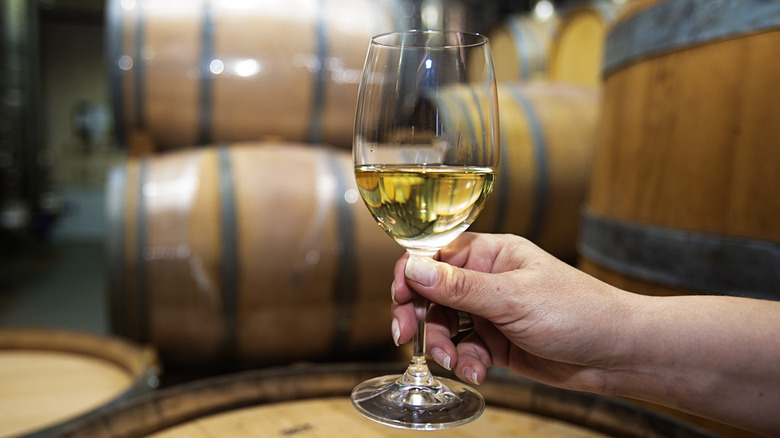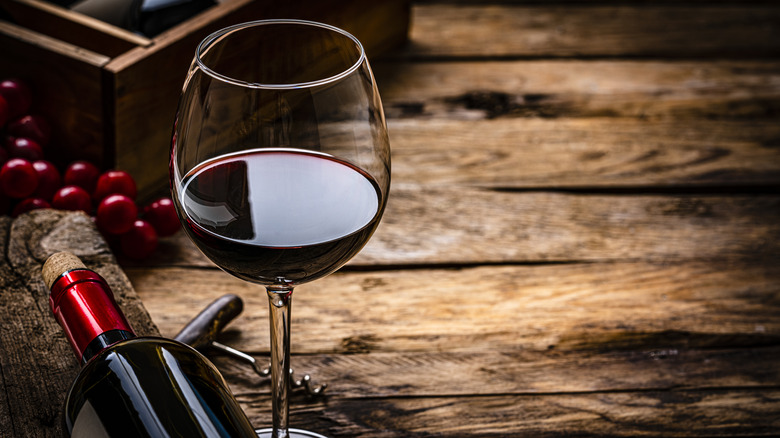The Absolute Worst Wine To Serve With Ham, According To An Expert
A beautifully glazed oven-baked ham is usually treated as the star of the show. This pork dish is aromatic and succulent, with a flavor that lingers as the tender slices melt in your mouth. To wash down your meal's main attraction, you'll need a drink that knows how to take a backseat to the party on your plate.
Food Republic consulted Matt Strauch, sommelier and general manager of Noble Riot, to find out which wines clash with roasted ham instead of complementing it. "I like to look at questions like this more in the sense of what wine would be the least pleasurable from a pairing perspective," Strauch said. To him, this means wines that will "overpower the delicate flavors of the ham."
The "worst" beverages to serve with food are ultimately subjective, but Strauch has two wines he would rank the lowest. "In this case, a heavily oaked or overly tannic wine, such as a bold Cabernet Sauvignon or a heavily oaked Chardonnay, would be the worst choice to serve with ham," he explained. In other words, save the bold, rich, and heavy bottles for another meal if you can, and favor something lighter.
How to avoid an oaky wine
Chardonnay, known for its signature buttery flavor, also tends to have an oak-heavy taste. This comes from its aging process, during which the wine is matured in stainless steel, plastic, or wooden barrels. Oak barrels are an obvious avenue to infuse the wine with a woodsy taste, but producers might also add wood chips to metal or plastic containers. The oaking process adds a vanilla aroma and can contribute to the heaviness of this beloved wine.
As such, you'll want to look for a milder iteration of Chardonnay if you want to serve it with ham. Seek out labels with terms like "unoaked," "naked," or "inox" (meaning stainless steel). Rather than a buttery beverage, you'll find yourself sipping a white wine that's crisp and acidic. Less oaky Chardonnays also tend to be more affordable, which makes it easier to buy and taste test a few varieties before settling on one for your ham.
Although Chardonnay grapes are the poster child for oaky wines, they're not the only ones treated to a stint in wood barrels. Keep an eye out for white wines that are deeply yellow, as this can be a clue that they've aged a while in wood, making them too strong to pair with ham.
Heavy tannins lose their seat at the table
Cabernet Sauvignon is so popular among drinkers because of its bold fruitiness and big personality. Unfortunately, while these qualities can shine when paired with heavily-spiced meals and gamey meats, they'll overwhelm the mild sweet-salty flavor of a baked ham. This is all because of tannins, tart-bitter compounds that come from grape skins and can make your mouth feel dry.
Matt Strauch's advice steers you away from red wines with a very full flavor and a decent amount of bitterness. Heavy reds like Cabernet Sauvignon linger on your tongue, too, further preventing you from tasting the delicious ham. That said, some diners just can't give up on their favorite red, or maybe your ham has a deep smoky glaze that's begging for a counterpoint. In that case, you can experiment with a bolder red.
Otherwise, you can glean context clues from a wine shop's description to avoid tannic wines. Unfortunately, labels do not have a measurement or quantifier for how many tannins are in a bottle, so keep an eye out for words like "dry," "grippy," or "harsh." Thick-skinned grapes like Nebbiolo, Merlot, and Malbec are also known for having more tannins, so reconsider any bottles made from these. When in doubt, opt for a lighter red, like Pinot Noir and Gamay.



